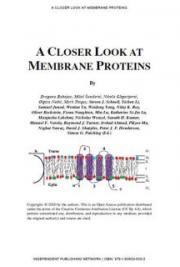REFERENCES
Ansari,A.A. and Ismail,S.A.(2012): Earthworms and Vermiculture Biotechnology, Management of Organic Waste, Dr. Sunil Kumar (Ed.), InTech,Available from: http://www.intechopen.com/ books/management-of-organic-waste/earthworms-and-vermiculture-biotechnology
Ansari,A.A. and Sukhraj,K.(2010): Effect of vermiwash and vermicompost on soil parameters and productivity of okra (Abelmoschus esculentus) in Guyana. Pakistan Journal of Agricultural Research, Vol. 23(3-4): 137-142
Arancon,N.Q., Edwards,C.A, Lee,S., Byrne,R.(2006): Effects of humic acids from vermicomposts on plant growth European Journal of Soil Biology,42:S65–S69
Bharadwaj,A.(2010):Management of Kitchen Waste Material through Vermicomposting, Asian J. Exp. Biol. Sci., Vol. 1 (1):175-177
Basheer, M. and Agrawal, O.P (2013): Management of paper waste by vermicomposting using epigeic earthworm, Eudrilus eugeniae in Gwalior, India Int.J.Curr.Microbiol.App.Sci 2(4): 42-47
Bhawalkar, U.S. (1995): ‘Vermiculture Ecotechnology’, Bhawalkar Earthworm Research Institute, Pune, India.pp.332
Buckerfield, J.C, Flavel, T.C, Lee, K.E. and Webster, K.A. (1999): Vermi- compost in solid and liquid forms as a plant growth promoter. Pedobiologia, 43(6):753-759.
CRIDA (2009): Vermicompost from Waste; Pub. Of Central Research Institute for Dryland Agriculture; Hyderabad, (Unit of Indian Council for Agricultural Research).
Chaoui,H.I, Zibilske,L.M. and Ohno,T.(2003): Effects of earthworms casts and compost on soil microbial activity and plant nutrient availability. Soil Biology and Bio-chemistry,35(2):295-302.
Chattopadhyay,G.N. (2012): Use of vermicomposting biotechnology for recycling organic wastes in agriculture. International Journal of Recycling of Organic Waste in Agriculture, 1(8):1-6
Darwin,C. (1881): The formation of vegetable mould through the action of worms, with observations on their habitats. Murray, London. pp.326
Dhanalakshmi.V, K. M. Remia, R. Shanmugapriyan and K. Shanthi (2014) Impact of addition of Vermicompost on Vegetable Plant Growth. Int. Res. J. Biological Sci. Vol. 3(12), 56-61
Diaz Cosin, D.J., Novo, M. and Fernandez, R. (2011): Reproduction of Earthworms: Sexual Selection and Parthenogenesis (Chapter 5) In: A. Karaca (ed.), Biology of Earthworms, Soil Biology 24, Springer-Verlag,Berlin Heidelberg
Edwards,C.A. (1988): Breakdown of animal, vegetable and industrial organic waste by earthworms. Agric. Ecosyst. Environ, 24: 21-31.
Edwards,C.A. (1998): Breakdown of animal, vegetable and industrial organic wastes by earthworms. In: Earthworms in waste and environmental management. Edwards, C.A., Neuhauser, F.(Eds). SPB Academic Publishing, The Hague, 21-31.
Edwards,C A. and Arancon, N. (2004): Vermicompost Suppress Plant Pests and Disease Attacks. Rednova News, http://www.rednova.com/display
Edwards,C.A., Arancon,N.Q., Emerson, E. and Pulliam,R.(2007): Suppressing plant parasitic nematodes and arthropod pests with vermicompost teas. BioCycle, 48(12):38-39.
Gandhi,M., Sangwan,V., Kapoor,K.K. and Dilbaghi,N. (1997): Composting of household wastes with and without earthworms. Environment and Ecology 15(2):432–434.
Giraddi,R.S. (2003): Method of extraction of earthworm wash: A plant promoter substance.VIIth National Symposium on Soil Biology and Ecology, Bangalore.
Giraddi,R.S., Patil,B.G., Lingaraju,P.S., Umapathy,A.N., Swamy,B.C. and Megalaman,I.R. (2008): Vermitechnology for Successful Management of Muncipal Wastes - A Joint Effort in South India Karnataka J. Agric. Sci., 21(2): 284-286
Govindan,V.S.(1998): Vermiculture and Vermicomposting, Ecotechnology for pollution control and Environmental Management.pp.48-57
Gunasekaran,S. and Desai, S.(1999): Vermicomposting and Spectral Analysis of Vermicompost. Asian.chem.Lett. 3:231-232.
Hashemimajd,K. and Jamaati-e-Somarin, S. (2011): Investigating the effect of iron and zinc enriched vermicompost on growth and nutritional status of peach trees Scientific Research and Essays,Vol. 6(23):5004-5007
Higa,T.(1991): Effective microorganisms: A biotechnology for mankind. pp. 8-14. In: J.F. Parr, S.B.Hornick, and C.E. Whitman (ed.) Proceedings of First International Conference on Kyusei Nature Farming. USDA, Washington.D.C., USA
Ismail,S.A.(1997): Vermicology ‘Biology of earthworms’ Orient Longman Limited, Chennai, India. ISBN 81-250-10106.
Kale,R.D.(1998):Earthworm: Nature’s gift for utilization of organic wastes, ‘Earthworm Ecology’(ed)Edwards, C.A. St. Lucie Press New York. pp.355- 376.
Kale,R.D.(1998): Earthworm Cinderella of Organic Farming. Prism Book Pvt Ltd, Bangalore, India.pp.88.
Kale,R.D. and Sunitha,N.S.(1995):Efficiency of earthworm E. eugeniae in converting the solid waste from aromatic oil extraction units into vermicompost, Journal IAEM, Vol. 22, No. 1,267- 269.
Lakshmi,B.L. and Vijayalakshmi,G.S. (2000): Vermicomposting of sugar factory filter press mud using African earthworm species E. eugeniae, Pollution Research,Vol.19, No.3:481-483.
Manaf,L.A, Jusoh, M.L.C, Yusoff,M.K, Hanidza,T., Ismail, T, Harun,R. & Juahir,H. (2009): Influences of Bedding Material in Vermicomposting
Process. Journal of Biology ,1(1): 81-91
Murali,M., Bharathiraja,A. and Neelanarayanan, P. (2011): Conversion of Coir Wastes (Cocos nucifera) Into Vermicompost by Utilizing Eudrilus Eugeniae and Its Nutritive Values. Ind. J. Fundamental and Applied Life Sciences, Vol. 1 (3): 80-83
Nagavallemma,K.P., Wani,S.P., Stephane,L., Padmaja,V.V., Vineela,C., Babu Rao, M. and Sahrawat,K.L.(2004):Vermicomposting: Recycling wastes into valuable organic fertilizer. Global Theme on Agrecosystems Report no.8.Patancheru 502 324, Andhra Pradesh, India: International Crops Research Institute for the Semi-Arid Tropics.pp.20.
Nair,J., Sekiozoic,V. Anda,M.(2006): Effect of pre-composting on vermicomposting of kitchen waste Bioresource Technology ; 97: 2091–2095
Padashetty,S. & Jadesh ,M. (2014): Earthworm distribution with special reference to physicochemical parameters in Aland and Chincholi regions, Gulbarga district, Int. J. Res. Engg & Tech., Vol. 2,11:1-6
Parray, M.A, Wani, M.G., Rather, G.M. (2014): Stimulatory Influence of Some Additives on Vermicomposting by Eudrilus Eugeniae International Journal of Engineering Science Invention, Vol. 3,7: 01-04
Parthasarathi,K., Ranganathan,L.S., Thirumalai,M., Parameshwaran,P. (1999): Mono and polyculture vermicomposting press mud enhance macronutrients, Asian J. Microbial Biotech & Env. Science, Vol. 1:63-65.
Paul,L.C. and Metzger,J.D. (2005):Impact of vermicompost on vegetable transplant quality;HortScience :40(7):2020-2023
Prabha,M.L, Priya, M.S and Pavithra,R.(2014): Microorganisms in the gut of Earthworm Eudrilus eugeniae, Int.J.Curr.Res.Chem.Pharma.Sci.1(3): 06-09
Pucher,J., Ngoc,T. N., Thi Hanh Yen ,T., Mayrhofer,R., El-Matbouli, M.,
Focken, U. (2014): Earthworm Meal as Fishmeal Replacement in Plant based Feeds for Common Carp in Semi-intensive Aquaculture in Rural Northern Vietnam, Turk. J. Fish. Aquat. Sci. 14: 557-56
Radhakrishnan,B. and Muraleedharan,N.(2010):A Monograph on Vermiculture and Vermicomposting in tea growing areas. A joint Publication from UPASI Tea Research Foundation, Coimbatore and National Tea Research Foundation, Kolkata, pp.76
Rajasekar,K., Daniel,T. and Karmegam,N. (2012): Microbial Enrichment of Vermicompost. International Scholarly Research Network ISRN Soil Science Vol 2012,Article ID 946079,pp.13
Rekha,G.S., Valivittan, K. and Kaleena, P.K. (2013): Studies on the Influence of Vermicompost and Vermiwash on the Growth and Productivity of Black Gram (Vigna mungo),Adv. in Biol. Res.,7(4):114-121
Ronald,E.G. and Donald, E.D. (1977): Earthworms for Ecology and Profit, Vol.1,‘Scientific Earthworm Farming.’ Bookworm Publishing Co., Ontario, California.
Saumaya, G., Giraddi, R. S. and Patil, R. H. (2007): Utility of vermiwash for the management of thrips and mites on chilli (Capiscum annum) amended with soil organics. Karnataka J. Agriculture Sciences, 20(3):657- 659.
Seenappa,C., Jagannatha, C. B., Kale, R. D.(1995): Conversion of distillery waste into organic manure using earthworms E. eugeniae, Journal IAEM, Vol. 22, No. 1:244-246
Sharma,S., Pradhan,K., Satya,S., Vasudevan,P. (2005): Potentiality of Earthworms for Waste Management and in Other Uses – A Review; The J. American Science, 1(1):4-16
Sinha,R.K., Agarwal,S., Chauhan,K., Valani,D.(2010):The wonders of earthworms & its vermicompost in farm production: Charles Darwin’s ‘friends of farmers’, with potential to replace destructive chemical fertilizers from agriculture. Agricultural Sciences Vol.1, No.2:76-94
Singha,R.P., Singha,P., Araujoc,A.S.F., Ibrahim,A.H. and Sulaiman,B.O. (2011): Management of urban solid waste: Vermicomposting a sustainable option Resources, Conservation and Recycling, 55: 719–729
Sreenivasan, E.(2013a):Bioconversion of industrial wood wastes into vermicompost by utilizing African Night Crawlers (Eudrilus eugeniae). Int.J.Adv. Engg.Tech,IV/III/Jul-Sept.2013:19-20
Sreenivasan, E.(2013b):Evaluation of Effective Microorganisms Technology in industrial wood waste management.Int.J.Adv.Engg.Tech,IV/III/Jul-Sept.2013/21-22
Suhane,R.K.(2007):Vermicompost.Publication of Rajendra Agriculture University, Pusa, Bihar, India, pp.88
Suthar,S. (2010): Evidence of plant hormone-like substances in vermiwash: An ecologically safe option of synthetic chemicals for sustainable farming. J. Ecological Engineering, 36(8):1089-1092
Thangavel,P., Balagurunathan,R., Divakaran,J. and Prabhakaran,J.(2003):
Effect of vermiwash and vermicast extract on soil nutrient status, growth and yield of paddy. Advances of Plant Sciences, 16(1):187-190.
Tiwari, S.C., Tiwari, B.K. and Mishra, R.R. (1989): Microbial populations, enzyme activities and nitrogen, phosphorus, potassium enrichment in earthworm casts and in surrounding soil of a pineapple plantation. J.Biological Fertility of Soils, 8(1):178-182.
Vasanthi,K., Chairman, K., Michael, J.S., Kalirajan, A. and Singh, A.J.A.R.(2011): Enhancing Bioconversion Efficiency of the Earthworm Eudrilus Eugeniae (Kingberg) by Fortifying the Filtermud Vermibed using an Organic Nutrient On Line Journal of Biological Sciences,11(1):18-22
Zafari and Kianmehr (2012): Pellets from compost, BioResources;7(4): 4704-4714.







